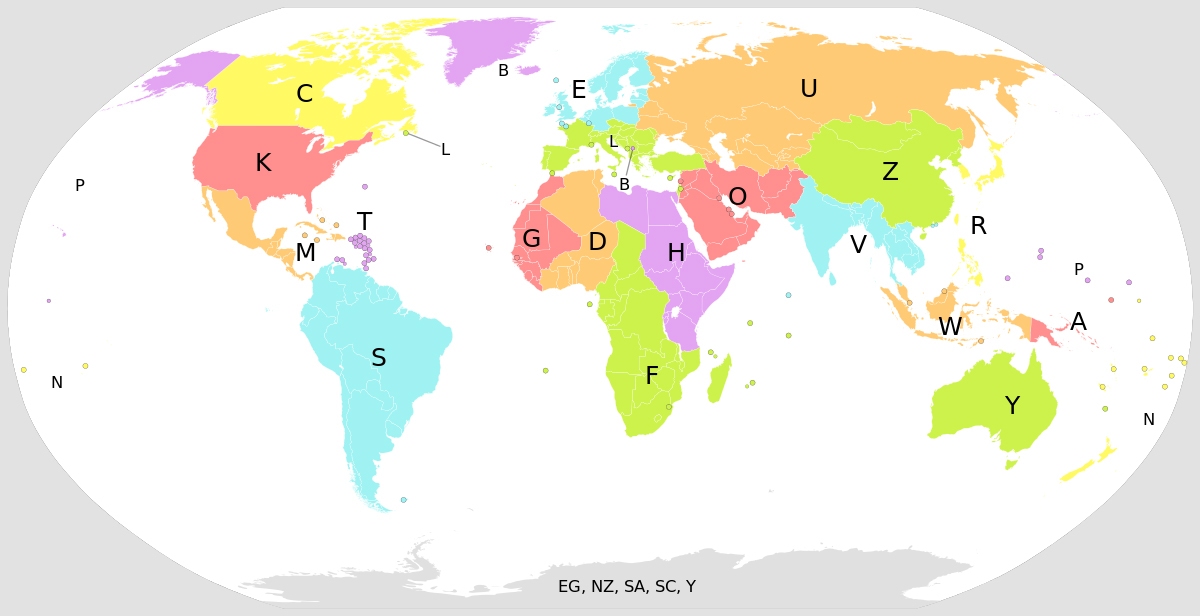Speak Clear English - Enroll Today
inglês para viagens:
Nomes e códigos dos principais aeroportos pelo mundo
Em geral, os códigos dos aeroportos são compostos por siglas de três ou quatro letras. Essas cartas são válidas em todo o mundo e essa necessidade de padronização surgiu há anos. Com o fim da Segunda Guerra Mundial, a indústria da aviação comercial experimentou um rápido desenvolvimento e não demorou muito para que os governos percebessem a necessidade de padronizar algumas siglas e referências em todo o mundo para garantir a compatibilidade das operações internacionalmente. Foi quando surgiram duas grandes organizações de aviação: a International Civil Aviation Organization (ICAO) e a International Air Transport Association (IATA), ambas com sede em Montreal, Canadá. Eles desempenham papéis diferentes, onde a ICAO é uma organização internacional aliada às Nações Unidas, enquanto a IATA é uma associação comercial que zela pelos interesses do setor aéreo.
Como são Definidos os códigos dos Aeroportos?
Com a abertura de um novo aeroporto, é necessário solicitar um código IATA e um código ICAO e cada um adota seus próprios critérios e lógica para a definição desses códigos. IATA tenta usar as três primeiras letras da cidade, ou as iniciais do nome do aeroporto, enquanto ICAO estabelece uma relação com a localização geográfica do aeroporto.
No sistema IATA, os códigos são geralmente formados pelas três primeiras letras da cidade,
Os códigos designados pela IATA costumam levar as três primeiras letras da cidade, como acontece com Miami (MIA), ou as iniciais do nome do aeroporto, como é o caso de John F. Kennedy (JFK) em Nova York. Nesse sistema, 17.576 combinações possíveis são possíveis, mas se a sigla pretendida já estiver em uso, os ajustes começam, o que nem sempre faz muito sentido. Em aeroportos no Canadá, por exemplo, os códigos de duas letras que eram usados antes do IATA ser estabelecido eram relacionados às estações telegráficas do país. Para torná-lo um acrônimo de três letras, eles adicionaram um Y na frente. Por exemplo, o aeroporto de Toronto tem o código YYZ, que não tem nenhuma relação com o nome da cidade “Toronto”.
O sistema ICAO usa uma lógica diferente, onde a primeira letra designa uma região, a segunda letra designa um país e as duas restantes representam um aeroporto específico. Devido à lógica geográfica utilizada, este sistema é utilizado na documentação de voo. Assim, para os sistemas IATA Dublin e Dubai são (DUB) e (DXB), respectivamente, e para o sistema ICAO é representado por EIDW e OMDB.
Esse mapa ilustra o funcionamento do sistema da ICAO:

Fonte: https://www.melhoresdestinos.com.br/aeroporto-codigo-3-letras.html
Para conhecer a origem e o significado das siglas de todos os aeroportos, consulte o Airport Codes.
AMS – Aeroporto Internacional de Amsterdam Schiphol – Haarlemmermeer, Holanda
ATL – Aeroporto Internacional de Atlanta – Estados Unidos
BOS – Aeroporto Internacional Logan – Boston, Estados Unidos
BSB – Aeroporto Internacional de Brasília – Presidente Juscelino Kubitschek – Distrito Federal, DF, Brasil
CDG – Aeroporto Internacional Charles de Gaulle – Ilha de França, França
CGH – Aeroporto de Congonhas – São Paulo, SP, Brasil
CNF – Aeroporto Internacional Tancredo Neves/Confins – Belo Horizonte, MG, Brasil
DEN – Aeroporto Internacional de Denver – Estados Unidos
DFW – Aeroporto Internacional de Dallas-Fort Worth – Estados Unidos
DXB – Aeroporto Internacional de Dubai – Emirados Árabes Unidos
EZE – Aeroporto Internacional de Buenos Aires – Argentina
FRA – Aeroporto Internacional de Frankfurt – Alemanha
GIG – Aeroporto Internacional Antonio Carlos Jobim / Galeão – Rio de Janeiro, RJ, Brasil
GRU – Aeroporto Internacional de Guarulhos – São Paulo, SP, Brasil
IAD – Aeroporto Internacional Dulles – Washington, Estados Unidos
IST – Aeroporto de Istambul Atatürk – Turquia
JFK – Aeroporto Internacional John F. Kennedy – Nova York, Estados Unidos
LAX – Aeroporto Internacional de Los Angeles – Estados Unidos
LGW – Aeroporto de Londres Gatwick – Inglaterra
LHR – Aeroporto Internacional Heathrow – Londres, Inglaterra
LIS – Aeroporto Internacional de Lisboa – Portugal
MAD – Aeroporto Internacional de Barajas – Madri, Espanha
MIA – Aeroporto Internacional de Miami – Estados Unidos
ORD – Aeroporto Internacional O’Hare – Chicago, Estados Unidos
POA – Aeroporto Internacional Salgado Filho – Porto Alegre, RS, Brasil
PTY – Aeroporto Internacional de Tocumen – Cidade do Panamá, Panamá
SDU – Aeroporto Santos Dumont – Rio de Janeiro, RJ, Brasil
SFO – Aeroporto Internacional de São Francisco – Estados Unidos
SSA – Aeroporto Dep. Luis Eduardo Magalhães – Salvador, BA, Brasil
SYD – Aeroporto Internacional Kingsford Smith – Sydney, Austrália
YYZ – Aeroporto Internacional Lester Pearson de Toronto – Canadá
Da próxima vez que você for viajar já sabe: fique atento aos códigos! Eles carregam informações muito importantes a respeito do seu destino e das possíveis conexões de voo até o seu destino.
Agora que você sabe mais sobre a formação do idioma que está estudando, é hora de melhorar seu inglês!
Clique em um dos links a seguir para começar a falar um inglês mais claro!
1) CLEAR ENGLISH PRONUNCIATION VIDEO COURSE
2) ENGLISH VOCABULARY – AUDIO FILES & PDF – TOEFL & IELTS
3) IDIOMS IN CONVERSATION
4) JUMPSTART YOUR ENGLISH AUDIOBOOK + EBOOK
Fontes:
https://www.teclasap.com.br/aeroporto/
Até a próxima, Feliz Aprendizado!
Speak Clear English - Enroll Today

Jhessika Nascimento
Director of International Partnerships
Jhessika Nascimento is the Director of International Partnerships for Study With Andrea and lives in Brasilia, Brazil.
Jhessika is a bilingual teacher of English and Portuguese, studying for a Master's Degree in Strategic Management in Information Technologies at the Universidad Internacional Iberoamericana.
Graduation in Letters - Portuguese and English.
Postgraduate in Teaching in Higher Education.
Postgraduate in Risk Management and Cybersecurity.
Postgraduate Executive MBA in Process Management BPM-CBOK.
Postgraduate in Translation and Proofreading of Texts in English.
The following is a TOEFL Reading practice test to help you prepare for the Reading section of the TOEFL test.
Instructions: Read the sample passage below and then answer the questions that follow.
TOEFL Reading Practice Passage
Gorillas are ground-dwelling, predominantly herbivorous apes that inhabit the forest of central Sub-Saharan Africa. The genus Gorilla is divided into two species: the eastern gorillas and the western gorillas (both critically endangered), and either four or five subspecies. They are the largest living primates. The DNA of gorillas is highly similar to that of humans, from 95 to 99% depending on what is included, and they are the next closest living relatives to humans after the chimpanzees and bonobos.
Gorillas' natural habitats cover tropical or subtropical forest in Sub-Saharan Africa. Although their range covers a small percentage of Sub-Saharan Africa, gorillas cover a wide range of elevations. The mountain gorilla inhabits the Albertine Rift montane cloud forests of the Virunga Volcanoes, ranging in altitude from 2,200 to 4,300 metres (7,200 to 14,100 ft). Lowland gorillas live in dense forests and lowland swamps and marshes as low as sea level, with western lowland gorillas living in Central West African countries and eastern lowland gorillas living in the Democratic Republic of the Congo near its border with Rwanda.
(#1) Gorillas move around by knuckle-walking, although they sometimes walk upright for short distances, typically while carrying food or in defensive situations. (#2) A 2018 study investigating the hand posture of 77 mountain gorillas at Bwindi Impenetrable National Park (8% of the population) found that knuckle walking was done only 60% of the time, and they also supported their weight on their fists, the backs of their hands/feet, and on their palms/soles (with the digits flexed). (#3) Studies of gorilla handedness have yielded varying results, with some arguing for no preference for either hand, and others right-hand dominance for the general population. (#4)
The eastern gorilla is more darkly colored than the western gorilla, with the mountain gorilla being the darkest of all. The mountain gorilla also has the thickest hair. The western lowland gorilla can be brown or grayish with a reddish forehead. In addition, gorillas that live in lowland forest are more slender and agile than the more bulky mountain gorillas. The eastern gorilla also has a longer face and broader chest than the western gorilla. Like humans, gorillas have individual fingerprints. Their eye color is dark brown, framed by a black ring around the iris. Gorilla facial structure is described as mandibular prognathism, that is, the mandible protrudes farther out than the maxilla. Adult males also have a prominent sagittal crest.
A gorilla's lifespan is normally between 35 and 40 years, although zoo gorillas may live for 50 years or more. Colo, a female western gorilla at the Columbus Zoo and Aquarium, was the oldest known gorilla at 60 years of age when she died on 17 January 2017.
Questions
1. According to the passage, gorillas can live in
a. a variety of altitudes.
b. several different countries in Africa.
c. thick forests.
d. lowland forests only.
2. All of the following is true about gorillas EXCEPT
a. they primarily eat smaller animals.
b. they live in a forest habitat.
c. their genetics are similar to humans.
d. their diet consists of vegetation.
3. Look at the word predominantly in paragraph 1. The word predominantly in this passage refers to
a. impulsively
b. unfortunately
c. mainly
d. lastly
4. Look at the word inhabits in paragraph 2. The word inhabits in this passage refers to
a. lives in
b. protects
c. goes
d. works
5. The author implies that
a. most gorillas prefer using their left hand over their right.
b. gorillas rarely walk on their knuckles.
c. gorillas regularly walk upright for long distances.
d. studies haven't solidly proven which hand gorillas prefer using.
6. Why does the writer mention that the eastern gorilla also has a longer face and broader chest than the western gorilla?
a. To validate the importance a broad chest in western gorillas
b. To define the meaning of "broad"
c. To highlight a physical difference between types of gorillas
d. To demonstrate that most gorillas are identical in physical build
7. Which of the following statements is true for BOTH eastern and western gorillas.
a. Both eastern and western gorrilas are brown with red foreheads.
b. Both eastern and western gorrilas have unique fingerprints.
c. Both eastern and western gorrilas have thin hair.
d. Both eastern and western gorrilas have light brown eyes.
8. In Paragraph 3, look at the four numbers (#1, #2, #3, #4) that indicate where the following sentence would be added to the passage.
Such a range of hand postures was previously thought to have been used by only orangutans.
Where would the sentence best fit?
(View all the correct answers below.)
Great job! If you're ready to take your TOEFL preparation to the next level, go to StudyWithAndrea.com/TOEFL.
Answers: 1. d 2. a 3. c 4. a 5. d 6. c 7. b 8. #3
Click on one of the following links to start speaking clearer English!
1) TOEFL MASTER CLASS
2) free mini-course "punctuation mistakes to avoid"
3) Clear English Pronunciation Video Course
4) English Vocabulary - Audio Files & PDF - TOEFL & IELTS
About Andrea
Andrea Giordano is the founder of StudyWithAndrea.com and has taught more than 1,000,000 students from 180 countries. Andrea holds a Master of Education (TESOL) from Shenandoah University, and is the former Executive Director of TESOL and ESL programs at Campbellsville University. Andrea is a proven leader in online English teaching and is driven by her passion to help you speak English clearly.





